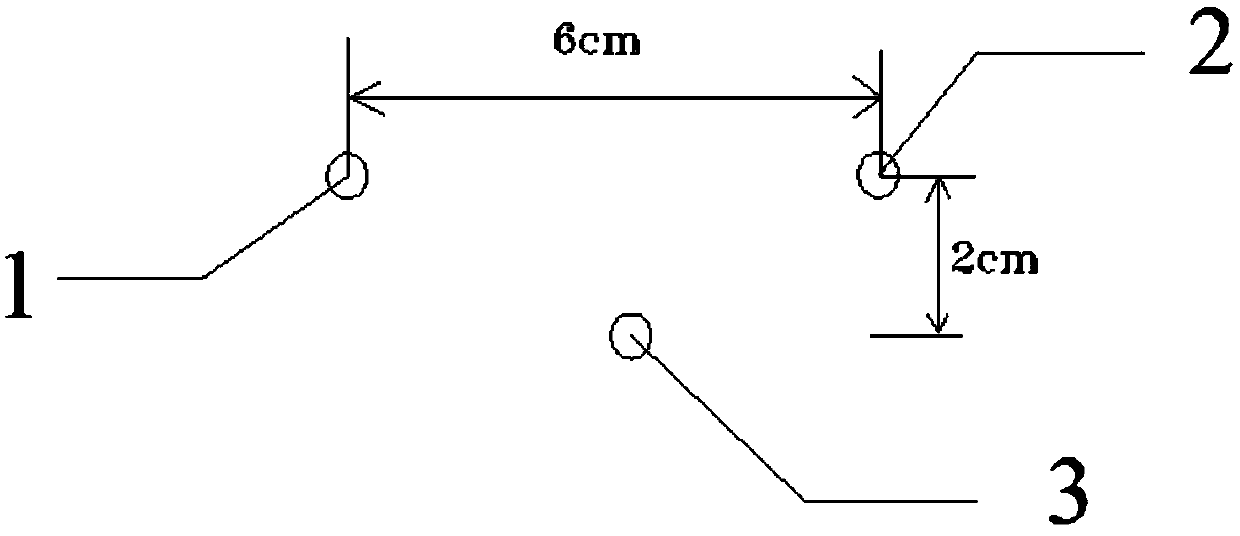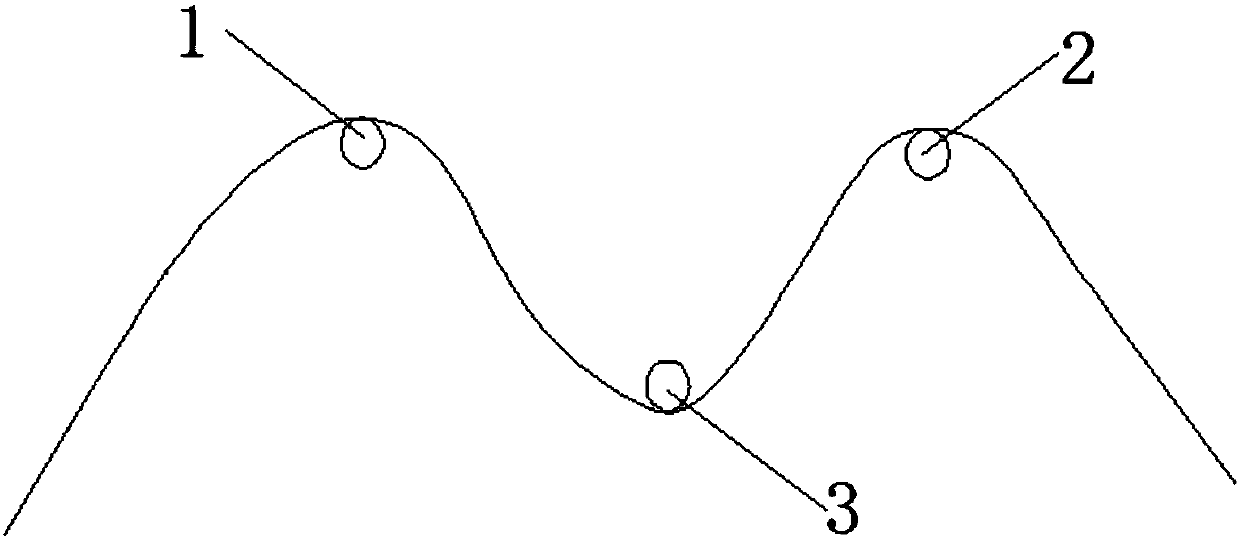Method for simultaneously testing stiffness, flexibility and drapability of fabric
A drapable, rigid-flexible technology, applied in the field of textile and garment performance testing, can solve the problems of many fabric samples, long time consumption, large test workload, etc., and achieve accurate and reliable results, simple and convenient process, and shortened test cycle. Effect
- Summary
- Abstract
- Description
- Claims
- Application Information
AI Technical Summary
Problems solved by technology
Method used
Image
Examples
Embodiment Construction
[0028] The present invention will be further described below in conjunction with accompanying drawing.
[0029] Such as figure 1 As shown, a fabric fixing device used in a method for simultaneously testing fabric rigidity, flexibility and drapability includes a first pin 1, a second pin 2, a third pin 3 and an image pickup device. The image capture device adopts a digital camera with more than 10 million pixels. The first pin 1, the second pin 2, and the third pin 3 are all arranged horizontally and arranged in an isosceles triangle (that is, the projections of the first pin, the second pin, and the third pin on a plane perpendicular to the axis of the first pin are respectively are the three vertices of an isosceles triangle.). The distance between the first pin 1 and the second pin 2 is 6 cm and they are set at the same height. The third pin 3 is located 2 cm below the line connecting the first pin 1 and the second pin 2 , and on the perpendicular line between the line co...
PUM
 Login to View More
Login to View More Abstract
Description
Claims
Application Information
 Login to View More
Login to View More - R&D
- Intellectual Property
- Life Sciences
- Materials
- Tech Scout
- Unparalleled Data Quality
- Higher Quality Content
- 60% Fewer Hallucinations
Browse by: Latest US Patents, China's latest patents, Technical Efficacy Thesaurus, Application Domain, Technology Topic, Popular Technical Reports.
© 2025 PatSnap. All rights reserved.Legal|Privacy policy|Modern Slavery Act Transparency Statement|Sitemap|About US| Contact US: help@patsnap.com



